In the fresh light after dawn, Vilis and I set out to hike the Many Peaks Range, that short line of steep-sided, conical hills to the north of Townsville that we’d seen so often from various vantage points within the city. We drove to Cape Pallarenda Conservation Park, dropped off our bikes to provide return transportation to the Bald Rock trailhead, and then backtracked to the Townsville Town Common Conservation Park.
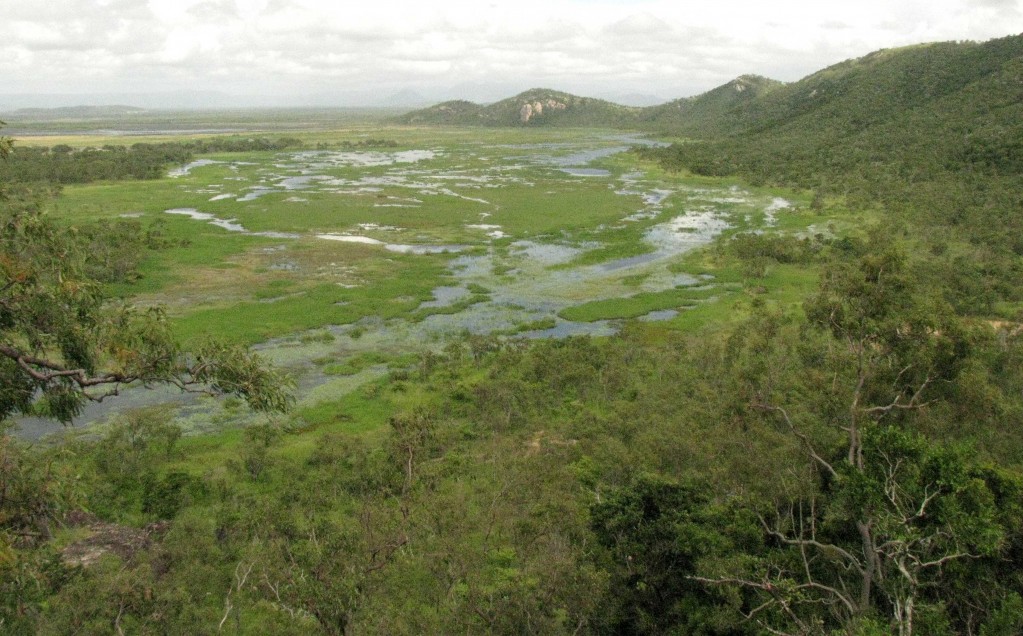
Townsville Town Common from Many Peaks Range, with Bald Rock in Centre Back (© Vilis Nams)
Following Freshwater Lagoon Road, we drove through the Common’s vast wetlands, which are the protected remnants of the Bohle River floodplain and which formed a picture smeared with mud, water, and vegetation that included cattails, grasses, sedges, and reeds. Slim, white intermediate egrets with bright yellow beaks hunted in shallow water, and flocks of Australian white ibises – my avian sheep – foraged near the road. I spotted a couple of brolgas or Australian cranes in the distance, the tall, grey cranes’ heads bearing a distinctive strip of red from their eyes around the back of their heads.
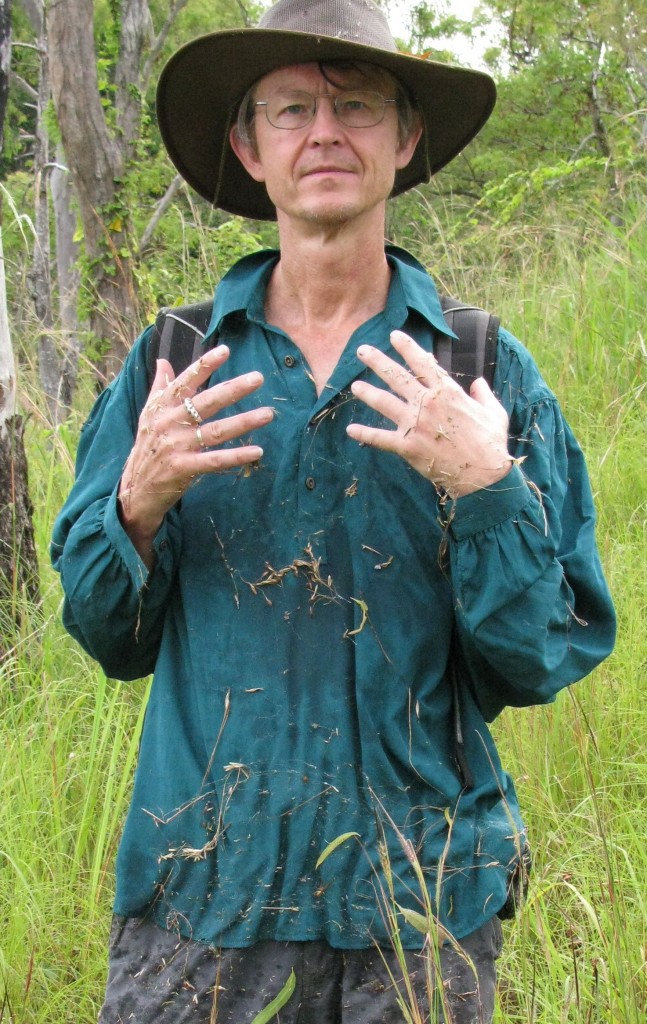
Vilis and Spider Web ‘Floss’ on Mount Marlow Track (© Magi Nams )
At the Bald Rock car park, we locked the Kia and headed upward toward Mount Marlow, the highest point (213 metres) in the Many Peaks Range. The 2.3 kilometre trail initially led us through open savannah woodland on steep, rocky ground much like that on Mount Louisa (see http://maginams.ca//2010/03/06/) or the hills in Oak Valley (see http://maginams.ca//2010/02/21/). Accompanied by butterflies, grasshoppers, flies, and an abundance of mosquitoes, we thrashed through tall grasses and herbaceous plants encroaching on a rocky trail set with occasional stone or wooden steps braced by rebar stakes. Flies buzzed around us, and spider webs hung between tall grasses, plastering our clothes and skin with sticky strands. Vilis said that he now knew what it must feel like to be inside a cotton candy maker, and for the first time in Australia, I wore my insect head net and was glad of it.
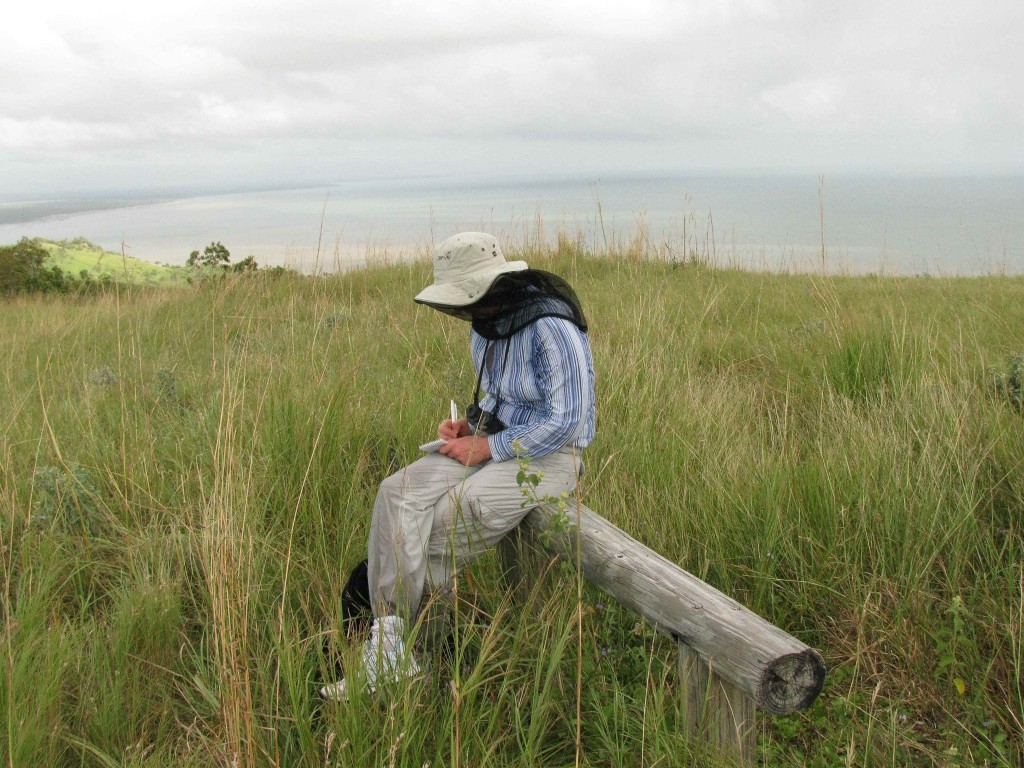
Here I’m jotting notes at the summit of Mount Marlow (© Vilis Nams)
Despite the abundance of annoying insects and arachnids, natural lookouts along the trail offered spectacular views out over the Common’s wetlands to Castle Hill and, farther in the distance, Mount Stuart and the Hervey Ranges veiled by haze and cloud. Spangled drongos and satin flycatchers – the former black with dagger-like beaks and flared tails; the latter a flock of well-dressed insect hunters attired in tuxedos and broad, throat-covering bowties – perched in branches of scattered poplar gums along the spine leading to the bare, grassy peak of Mount Marlow. Offshore, Magnetic Island loomed close and dark with forested peaks.
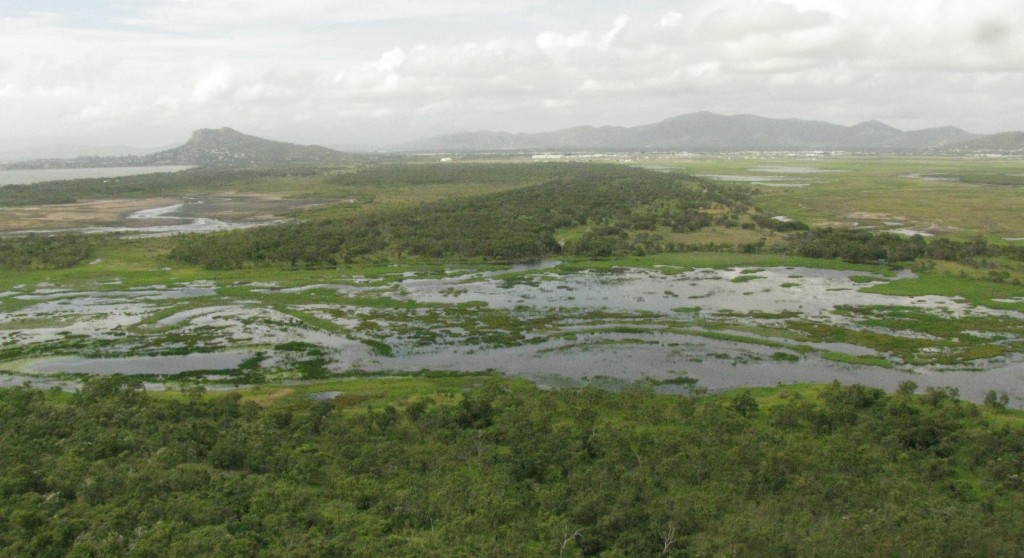
View to South from Many Peaks Range, with Castle Hill at Back Left and Mount Stuart at Back Right (© Vilis Nams)
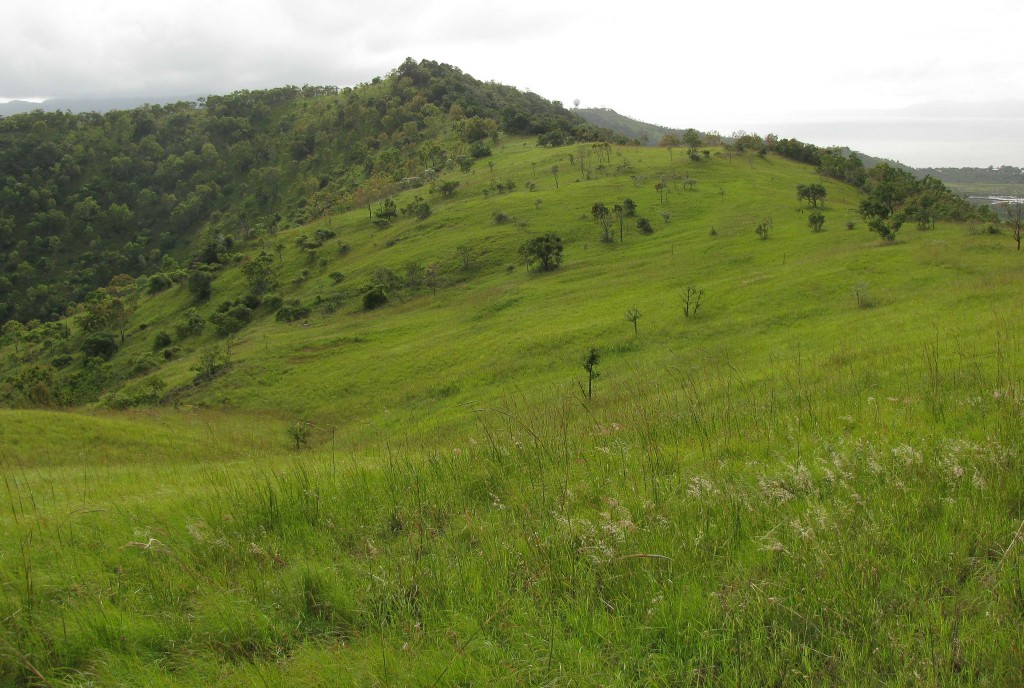
Lush Grassland East of Mount Marlow (© Vilis Nams photo)
Beyond the height of land, we followed the trail towards Cape Pallarenda, a further 5.1 kilometres. Passing through additional grassland and open savannah woodland, the track became even more overgrown and difficult to distinguish. As we hiked down toward dense vine thicket cloaking the southern slopes of the range, we slipped on rubble and pushed through dense grasses taller than my head, trusting our feet to find purchase on the unseen ground surface without rolling an ankle or stepping into a hole.
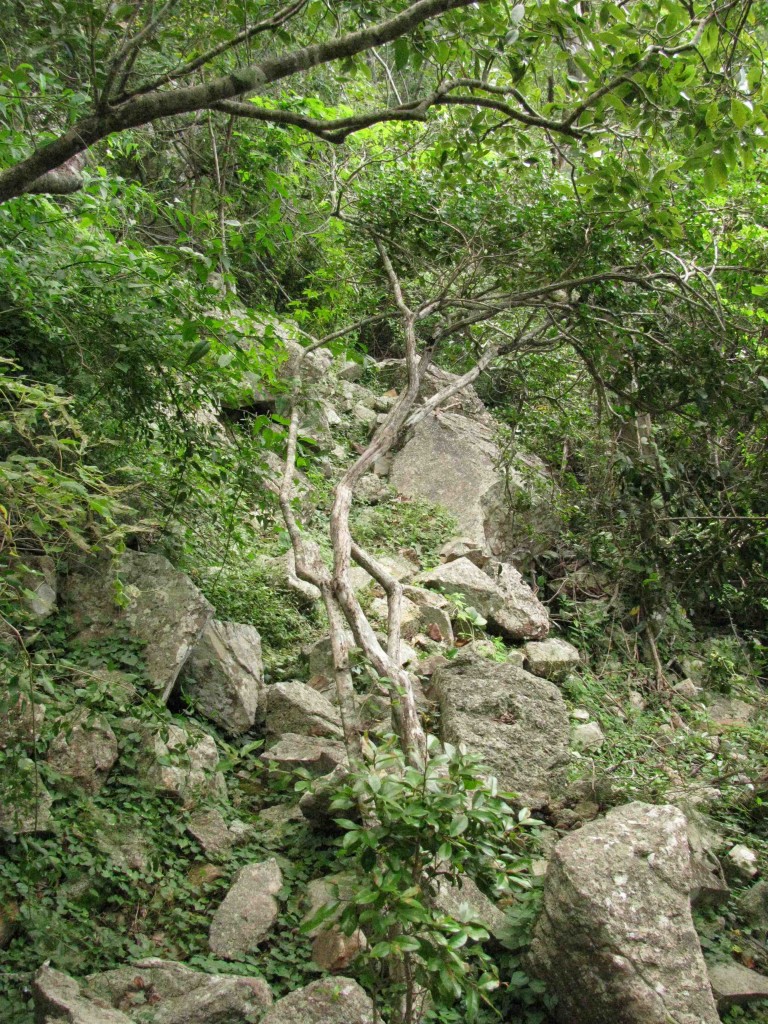
Vine Thicket on Many Peaks Range (© Vilis Nams)
Within the thicket, vines snared scrubby trees, twisting and spiralling around trunks and branches. They sent half-loops arching across the trail or tangled with themselves to form net-like fences. Whereas we’d spotted a few red and white hibiscus blossoms in rock outcrops on earlier portions of the track, in the thicket, mounds of blue morning glory climbed over deadfall and low branches, some forming exquisite trellises that could have graced a wedding party. Among the rocks on the track, Vilis spotted and photographed a brown skink with a white stripe running from its upper lip back along its body (which I later identified as Carlia munda) and a young collared whipsnake with striking black and yellow markings on its head and neck.
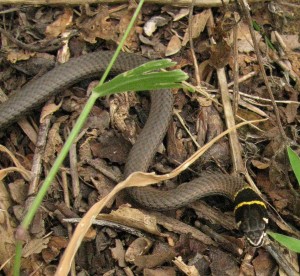
Collared Whipsnake (© Vilis Nams)
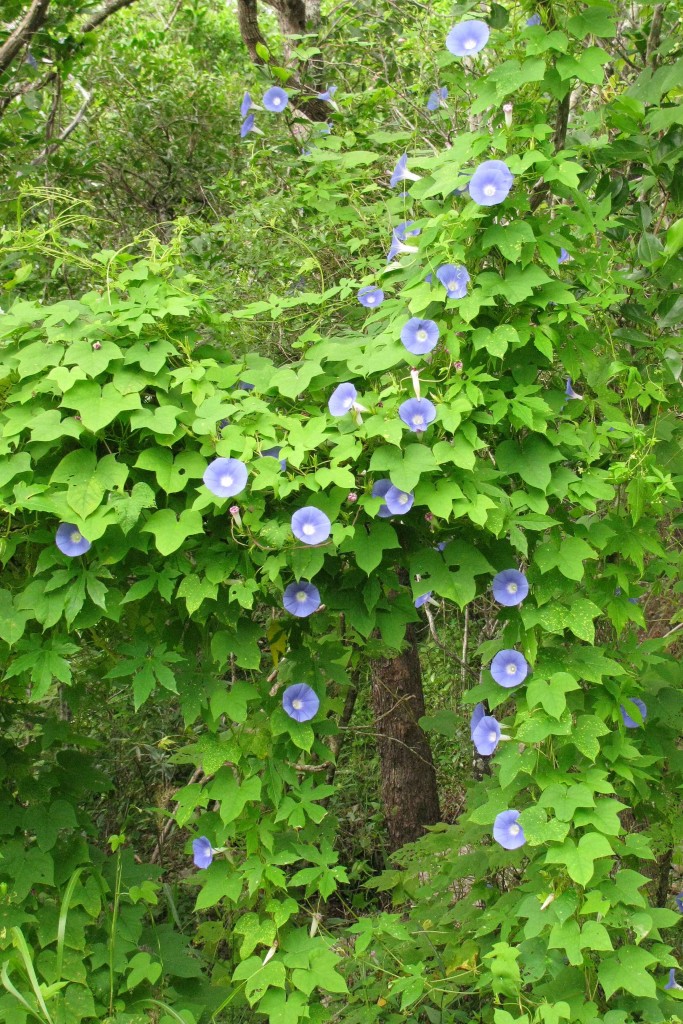
Morning Glory in Vine Thicket (© Vilis Nams)
We rock-hopped around cliff faces with gigantic boulders perched atop them, and paused to rest at bald Tegoora Rock 1.2 kilometres from Cape Pallarenda, which granted expansive views of the Common. That enormous wetland struck me as the largest mosquito breeding area I had ever seen. The remainder of the trail to the cape was broader and much better cleared and maintained than the rough 3.8 kilometres between the cape and Mount Marlow. At the end, we unlocked our bicycles from the fence where we’d left them and pedalled to the park’s picnic area for a breather before cycling to the car.
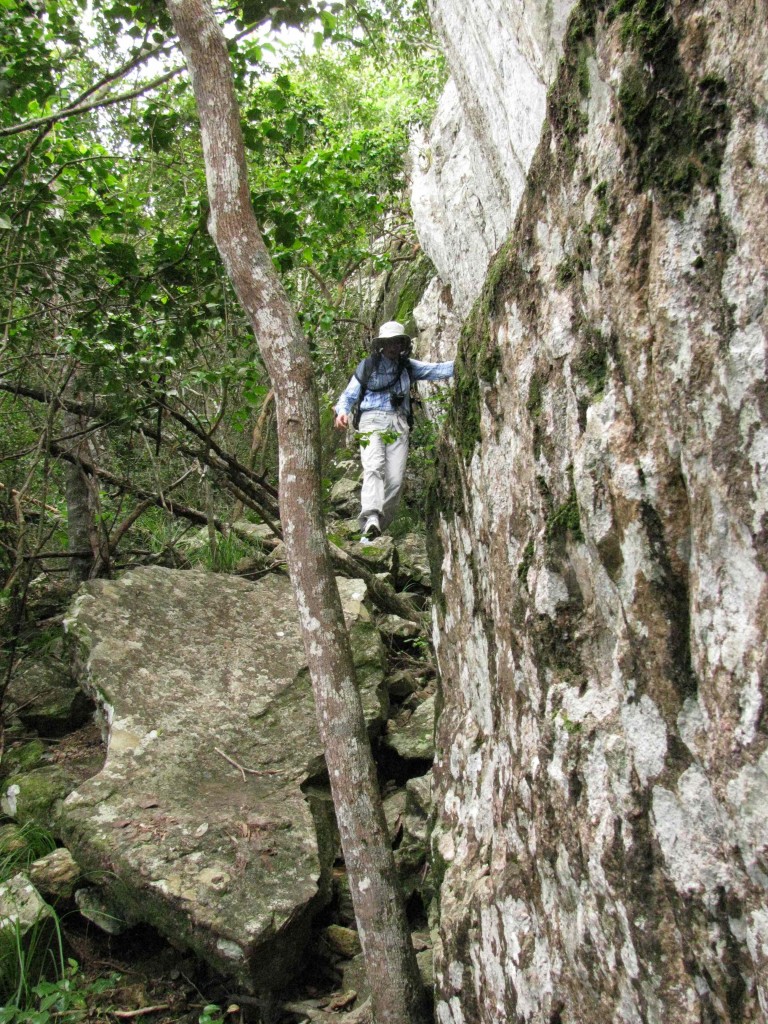
Rock Hopping on Many Peaks Range Track (Vilis Nams photo)
The debate then became whether to ride the Cape Pallarenda Road to Freshwater Lagoon Road and the car, or to tackle a trail we’d seen on Google-Earth, which appeared to follow the base of the hills back to the Bald Rock car park. I voted for the former, while Vilis pushed for the latter, saying, “Let’s try it. We’ll know soon enough if it doesn’t work.”
During the next hour and a half, while we rode over faint gravel choked with rank vegetation, pushed our bikes through narrow streams and over huge diggings rooted perhaps by feral pigs, dodged rocks and eroded gullies on the trail, and slogged through mud and water, with grasses towering over our heads, I realized that Vilis’s definition of knowing ‘if it doesn’t work’ was a whole lot different from mine. Nearly every minute, I expected to land on my face, but miraculously kept myself and my bike upright. Red-faced with exhaustion and bitten by mozzies and green tree ants, I was way out of my comfort zone on that track, but thought of how my 18- and 21-year-old sons would have loved it. So, I rode for them. At the end of it, my head ached, my heart pounded, and my legs felt like rubber. I made it, but I wouldn’t do it again.
Fauna sightings: Australian white ibises, intermediate egrets, *brolgas, spangled drongos, satin flycatchers, golden-headed cisticolas, pheasant coucal, *skink Carlia munda, *collared whipsnake. (*lifelist sighting)


